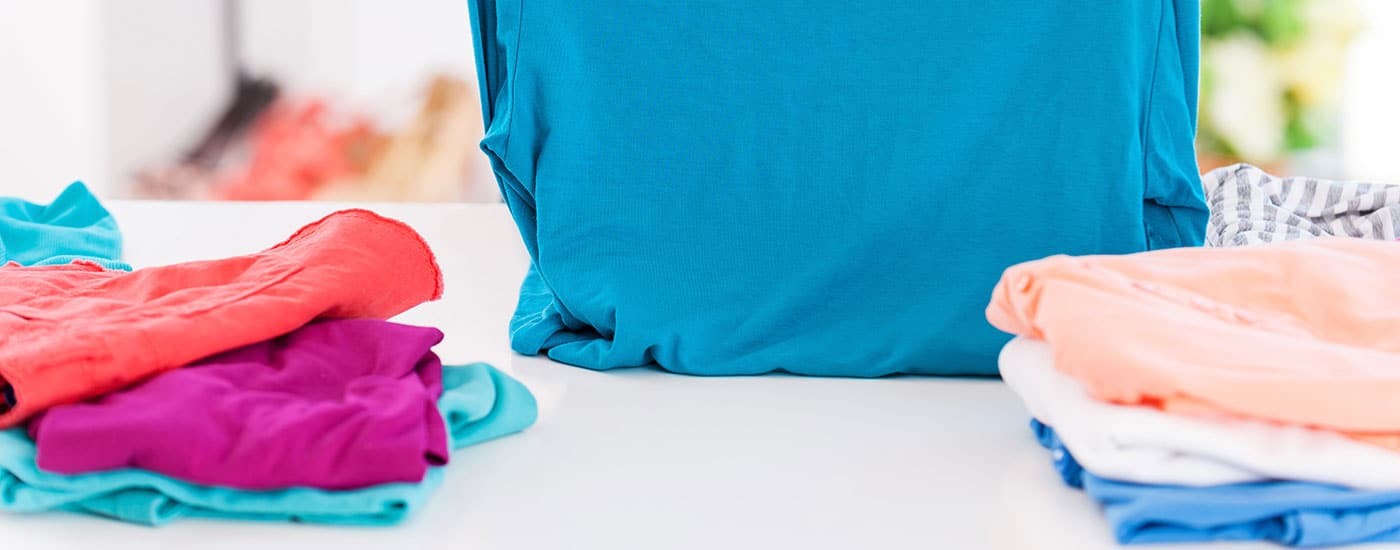
61 Locations Nationwide (800) 838-7995
We're here to help. (800) 838-7995
Schedule a Free Consult
Schedule Your
Free Design Consultation
Free Design Consultation
You can get more than just clean clothes in a laundry room; you can also spruce up your environmental commitment. Washing clothes consumes a startling amount of water, energy and even chemicals, but there are quite a few things you can do to change that.

By making a few simple changes to your laundry routine you can:
Here are some of our ideas you can adopt right away. Share your successes with neighbors and friends so that your small changes build up to a movement.
1. Control the Water Temp
Most of the energy used in washing clothes is for heating the water. Use cold water as much as possible.
Hot water washes are usually recommended for heavily soiled clothing. You can avoid using hot water by pre-soaking heavily soiled clothing in cold water with a few tablespoons of baking soda for one hour before laundering.
2. Wash Full Loads
Even the most energy efficient washers can use up to 40 gallons of water for a large load. Reducing the number of loads you wash per week will save gallons of water. If you wash eight or more loads a week consider combining at least one of those loads with another. Adjust the water level every time you wash.
3. Opt for Natural Ingredients
Natural detergents are free of dyes, synthetic fragrances and many other chemicals that have been found to be toxic to water quality, plant and sea life. Most natural detergents are also formulated to perform well with cold-water washing.
You could even experiment with making your own homemade detergents and stain removers. Vinegar, lemon juice, hydrogen peroxide and baking soda have been used for generations to clean clothes; all of these ingredients are considered eco friendly.
4. Consider Oxygen Bleach
Oxygen bleach packs the same cleaning punch as chlorine bleach without the chlorine. Oxygen bleach is completely non-toxic to humans, animals and plants.
5. Rethink Dryer Sheets
Consider using reusable dryer sheets to cut down on waste. There are a number of eco-friendly reusable dryer sheets and dryer balls on the market. You could even make your own.
6. Hang Clothes to Dry
Give your dryer a rest and hang clothes to dry. Hanging clothes extends their life and saves energy. Line drying can be done year around, as you may also hang clothes indoors when the weather outside isn’t cooperating.
Did you know: Indoor rack drying in the winter also serves as a natural humidifier for your home?
7. Up Your Dryer’s Efficiency
Your dryer will perform at its best if you keep the lint trap clean and clear. If your dryer has a moisture sensor, be sure to use it to cut down on over drying clothes. If you want to give your dryer an extra helping hand, send clothes through an extra spin cycle to drain additional moisture before drying.
8. Upgrade Your Washer and Dryer
Don’t run out and get a new washer and dryer. If the one you have is working fine continue to use it. When the time comes to purchase new, consider getting an energy efficient model. Look for washers with the EPA Energy Star Label. Energy Star does not label dryers so choose a dryer with a moisture sensor to help conserve energy.
9. Sort
Dry like items such as towels and heavier cottons in a separate load from lighter-weight, faster drying clothes. This will ensure fast, even drying. Dry loads back-to-back to take advantage of residual heat.
10. Toss in a Towel
Adding a dry towel to a drying cycle will speed up drying. The towel will absorb additional moisture so your dryer won’t have to work as hard.
References:
8 Eco Friendly Laundry Tips, Real Simple
Each of our custom offices is completely personalized and begins with a complimentary design appointment.
Schedule a ConsultDuring the consultation you and a designer will discuss your goals, wish list, and project budget, with the aim of designing an office system, and work area that will: